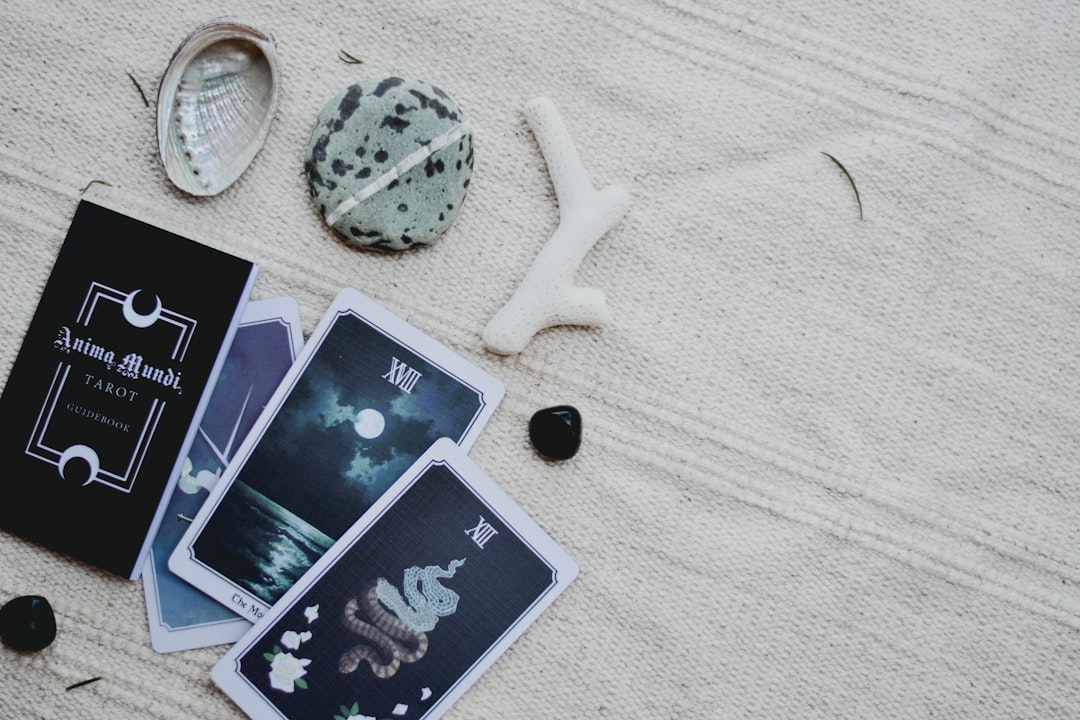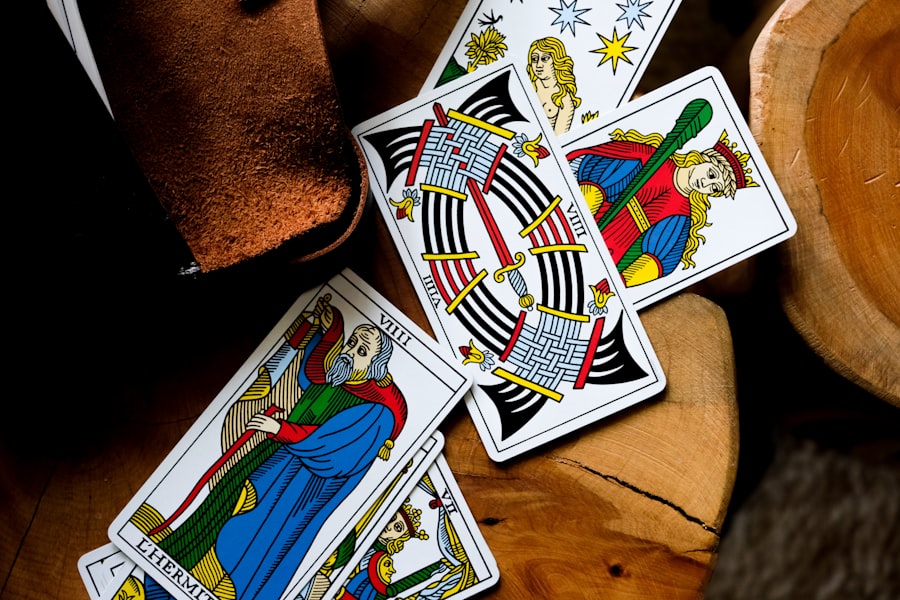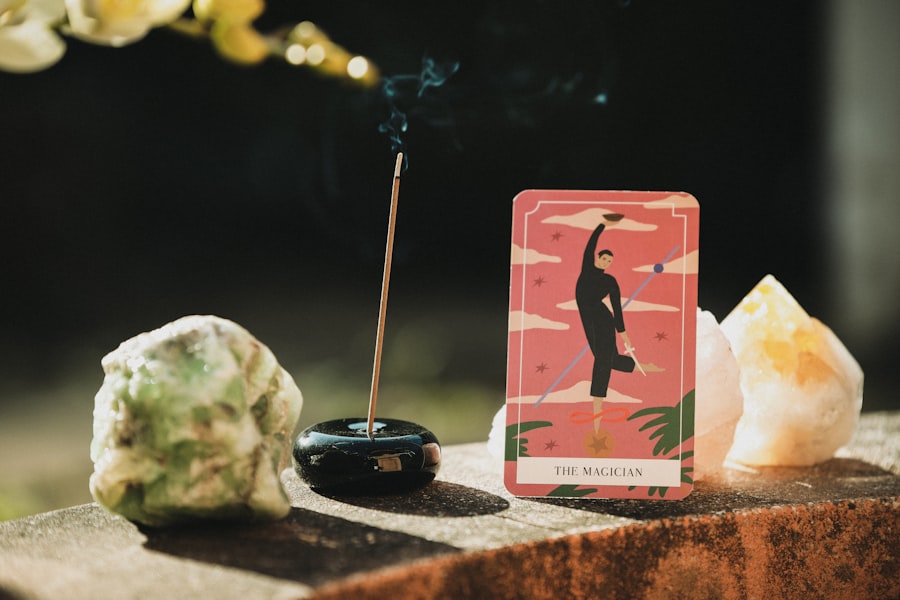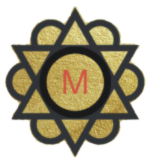
The Tarot, often perceived as a mystical tool for divination, has roots that extend far beyond mere fortune-telling. At its core, the Tarot is a rich tapestry of archetypes and symbols that can facilitate profound self-exploration and emotional healing. Each card in the Tarot deck represents a unique aspect of the human experience, encompassing a wide range of emotions, challenges, and triumphs.
By engaging with these cards, individuals can tap into their subconscious, uncovering hidden feelings and insights that may be obstructing their path to emotional well-being. The healing potential of Tarot lies in its ability to foster introspection. When individuals draw cards, they are not merely seeking answers; they are inviting a dialogue with their inner selves.
This process can illuminate patterns of thought and behavior that contribute to emotional distress. For instance, the appearance of the Tower card might prompt an individual to confront feelings of upheaval or chaos in their life, encouraging them to explore the roots of these emotions. By acknowledging and understanding these feelings, individuals can begin to heal and move forward with greater clarity and purpose.
Key Takeaways
- Tarot can be used as a tool for healing by providing insight and guidance into emotional and mental well-being.
- When choosing a tarot deck for emotional growth, it’s important to find one that resonates with your personal energy and emotions.
- Using tarot cards for self-reflection and insight can help individuals gain a deeper understanding of their emotions and thought patterns.
- Tarot spreads specifically designed for emotional healing can provide clarity and guidance in navigating difficult emotions and experiences.
- Incorporating tarot into daily self-care practices can help individuals maintain emotional balance and mindfulness. Seeking professional help and guidance in tarot for healing can provide additional support and insight into emotional well-being.
Choosing the Right Tarot Deck for Emotional Growth
Selecting a Tarot deck is a deeply personal journey that can significantly influence one’s experience with the cards. With countless decks available, each with its own artistic style and thematic focus, it is essential to choose one that resonates on an emotional level. Some individuals may gravitate toward traditional decks like the Rider-Waite-Smith, known for its rich symbolism and straightforward imagery, while others may prefer more contemporary or themed decks that align with their personal interests or spiritual beliefs.
When choosing a deck for emotional growth, consider how the imagery speaks to you. A deck that evokes strong feelings or memories can serve as a powerful catalyst for healing. For example, a deck featuring nature imagery may inspire feelings of tranquility and connection to the earth, while a deck with abstract art might encourage deeper contemplation of one’s inner landscape.
Additionally, it is beneficial to explore the accompanying guidebook or resources associated with the deck, as these can provide valuable insights into the meanings of the cards and how they can be applied to emotional healing.
Using Tarot Cards for Self-Reflection and Insight

The practice of using Tarot cards for self-reflection involves more than simply interpreting the meanings of the cards; it requires an open heart and mind to engage with the messages they convey. One effective approach is to set a specific intention before drawing cards. This intention could relate to a particular emotional challenge or a desire for clarity in a specific area of life.
By focusing on this intention, individuals can create a framework for their reading that enhances its relevance and impact. Once the cards are drawn, it is essential to take time to reflect on their imagery and symbolism. Each card can evoke different emotions and thoughts depending on the context of the reading and the individual’s personal experiences.
For instance, drawing the Empress card may prompt feelings of nurturing and abundance, leading one to reflect on their relationships and self-care practices. Engaging in journaling after a reading can further deepen this process, allowing individuals to articulate their thoughts and feelings in response to the cards. This written reflection can serve as a valuable tool for tracking emotional growth over time.
Tarot Spreads for Emotional Healing
Tarot spreads are structured layouts that guide the interpretation of cards during a reading. Different spreads can be tailored to address specific emotional issues or questions, making them invaluable tools for healing.
This simple yet effective layout allows individuals to explore how past experiences shape current emotions and how they can influence future outcomes. Another powerful spread is the “Inner Child” spread, which focuses on healing childhood wounds and reconnecting with one’s inner self. This spread often includes positions that address feelings of safety, love, and acceptance from one’s inner child.
By drawing cards specifically related to these themes, individuals can gain insights into unresolved issues from their past and begin to nurture their inner child through compassion and understanding. The process of interpreting these cards can reveal deep-seated emotions that require attention and healing.
Incorporating Tarot into Daily Self-Care Practices
Integrating Tarot into daily self-care routines can enhance emotional well-being by providing consistent opportunities for reflection and growth. One effective method is to draw a daily card each morning as part of a morning ritual. This practice allows individuals to set intentions for the day ahead while also inviting insights from the Tarot.
The card drawn can serve as a focal point for meditation or journaling throughout the day, encouraging mindfulness and self-awareness. Additionally, creating a dedicated space for Tarot practice can enhance the overall experience. This space could include items that promote relaxation and focus, such as candles, crystals, or calming music.
By establishing a sacred environment for Tarot readings, individuals signal to themselves that this practice is an important aspect of their self-care routine. Over time, this commitment can lead to deeper insights and emotional healing as individuals cultivate a stronger connection with themselves through the wisdom of the Tarot.
Seeking Professional Help and Guidance in Tarot for Healing

While self-exploration through Tarot can be incredibly beneficial, there are times when seeking professional guidance can enhance the healing process. Professional Tarot readers or therapists who incorporate Tarot into their practice can provide valuable insights and support. These professionals often have extensive experience in interpreting cards within the context of emotional healing, offering perspectives that individuals may not have considered on their own.
Working with a professional can also create a safe space for exploring difficult emotions or experiences that may arise during readings. A trained facilitator can help individuals navigate complex feelings and provide tools for coping with emotional challenges. Furthermore, they can assist in developing personalized Tarot spreads tailored to specific healing goals, ensuring that each session is focused and productive.
This collaborative approach can deepen one’s understanding of both the Tarot and oneself, fostering a more profound journey toward emotional healing.
By understanding its potential, choosing the right deck, utilizing self-reflection techniques, exploring various spreads, incorporating it into daily practices, and seeking professional guidance when necessary, individuals can embark on a transformative journey toward greater emotional well-being.
The Tarot serves not only as a mirror reflecting our inner landscapes but also as a compass guiding us toward healing and wholeness.
If you are interested in unlocking the secrets of tarot card meanings, you may also enjoy reading Unveiling the Mysteries: The Meaning and Interpretation of the Moon Tarot Card. This article delves into the symbolism and significance of the Moon card in tarot readings, offering insights into its interpretation and how it can be used for personal growth and reflection. Exploring different aspects of tarot can provide a deeper understanding of oneself and the world around us.
FAQs
What is tarot?
Tarot is a deck of 78 cards that are used for divination, self-reflection, and spiritual growth. Each card has its own imagery and symbolism, and can be interpreted in various ways.
How can tarot be used for healing?
Tarot can be used for healing by providing insight into emotional and psychological issues, offering guidance and support, and promoting self-reflection and personal growth.
How do you use tarot cards for emotional growth?
To use tarot cards for emotional growth, one can engage in self-reflection and meditation while drawing and interpreting the cards. The imagery and symbolism of the cards can help individuals gain insight into their emotions and thought patterns.
Can anyone use tarot for healing?
Yes, anyone can use tarot for healing, as long as they approach it with an open mind and a willingness to engage in self-reflection and personal growth.
Are there any risks associated with using tarot for healing?
While tarot can be a valuable tool for self-reflection and personal growth, it is important to approach it with a healthy dose of skepticism and not rely solely on the cards for making important life decisions. It is also important to seek professional help if dealing with serious emotional or psychological issues.






